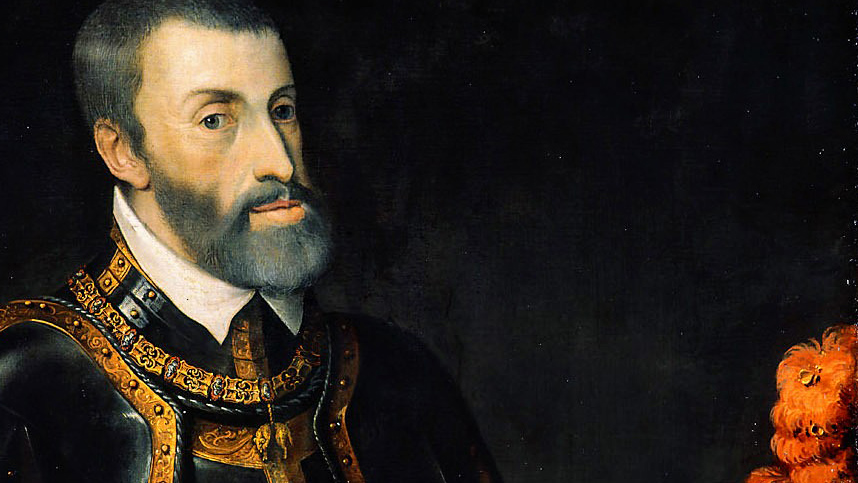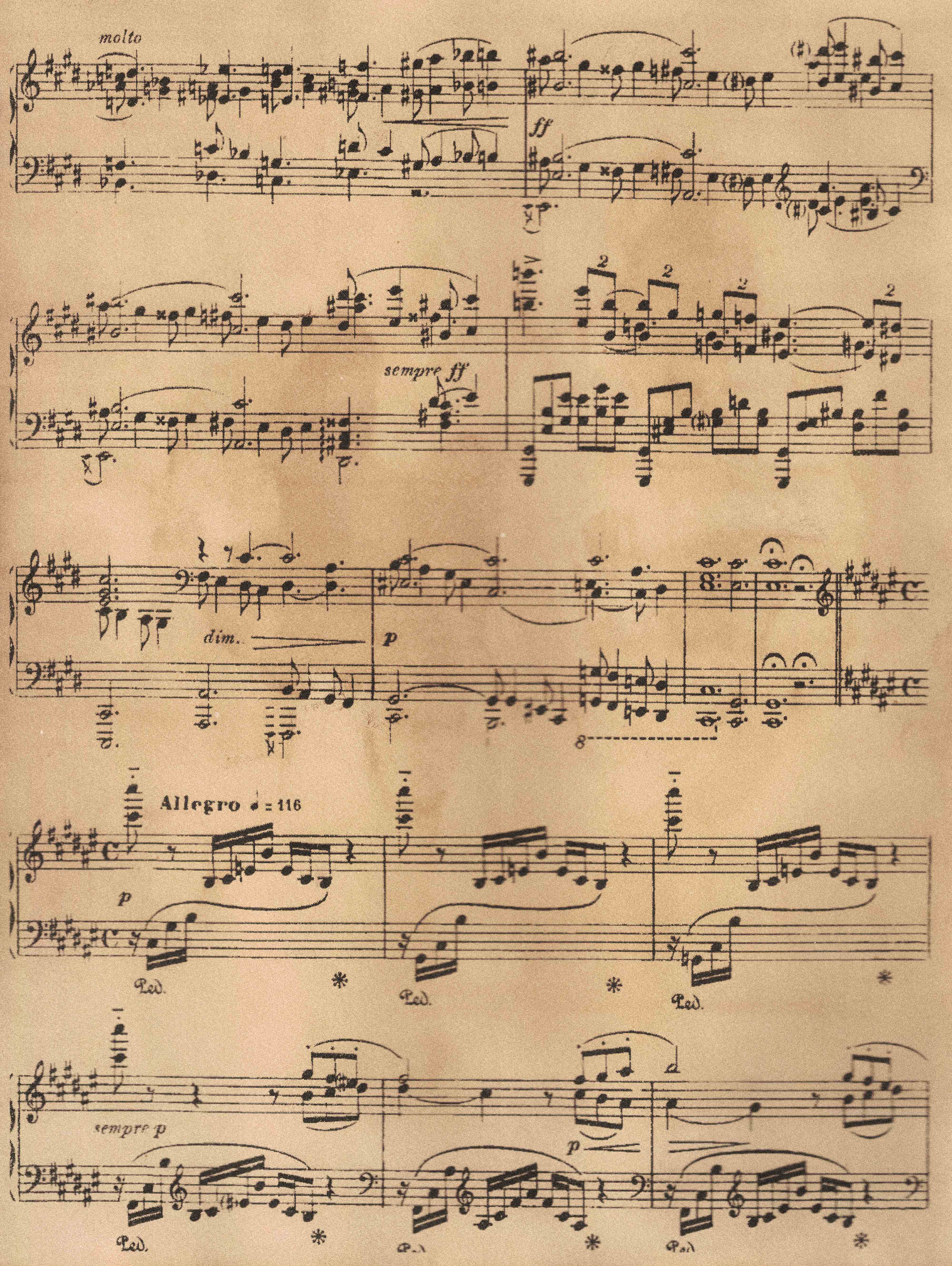A Focus on Music

Charles and Clement could also control aspects of the prescribed liturgy and the music of
the Mass. It is clear from what we know of Charles’s personality that the ceremony–and not
least its music–was important to him. An oft-cited passage from Prudencio de Sandoval’s
biography of Charles V underscores the ruler’s interest in music:
“And he knew music, and felt it and liked it, for many times the friars, behind the door,
heard him leave his cell and go to the main altar, and they saw him beating time and singing
in harmony with those who sang in the choir...”
Music was extremely important to the ceremony and to the culture and politics of the
Renaissance. Nearly every liturgical text in the period was sung, and even lay people could
recognize plainchant Plainchant: A monophonic rhythmically free liturgical chant of any of various Christian rites sung daily or on important feast days. Because liturgical music had a
long tradition of elaborations of prescribed plainchant with polyphony (music with multiple
parts), listeners in the period were often very capable of hearing the original chant embedded
within a composition such as a motet Motet: A polyphonic choral composition on a sacred text usually without instrumental accompaniment and understanding its significance — a practice similar
in some ways to recognizing a sample in today’s hip hop. Popular songs could also be used as
the basis for polyphonic masses, again resulting in a kind of intertextuality that could carry
significant meaning. In both instances — motets based on chant and masses based on popular
songs — liturgical text is combined with musical references to different text that serves as a
kind of commentary or gloss.

The symbolic importance of music for these Renaissance audiences is apparent in the
differences that existed between the royal coronation in Aachen and the imperial coronation in
Rome, or in Charles’s case, Bologna. Aachen was the traditional coronation site of German
kings (as opposed to emperors). A royal coronation (i.e., as king) had to happen before an
imperial coronation (i.e., as emperor) took place, normally in Rome. Manuscripts that document
the royal and imperial coronation ceremonies reveal broad similarities between the two
(anointing with oil and bestowing of weapons and insignia Insignia: A badge of authority or honor, for example), but important details
pertaining to music distinguish the ceremonies. For the royal coronation in Aachen, the chants
and prayers known collectively as the proper were to be those for January 6, or the feast of
Epiphany, the day Christ’s divinity was revealed to the Magi.
The allegorical significance of the texts of these chants in this context would not have gone
unnoticed, for they refer repeatedly to Christ as a new king. The newly crowned king was to
rule on Christ’s behalf, and his authority was revealed to the faithful in the course of the
coronation ceremony, just as Christ was revealed to the Magi. As the Magi recognized the
authority of the infant Christ, kneeling down and paying him homage, so the secular rulers of
the Empire were to pay homage to the newly crowned king. In contrast to the proper chants of
Aachen’s royal coronation ceremonies, Rome’s imperial ceremonies required only that the
correct proper of the day be sung.

Other aspects of the event demonstrate the ways in which music was put to political purposes
in the coronation. Because the retinues Retinues: A group of retainers or attendants of both the pope and the emperor were in attendance at
the coronation, the choirs of both men were present. The papal choir included the celebrated
Italian composer Costanzo Festa, and the imperial choir was directed by Adrien Thiebault, a
relatively unknown composer today. The imperial choir’s most illustrious member was the South
Netherlandish composer Nicolas Gombert, who served as master of the emperor’s choirboys. A
witness to the coronation mentioned that the Credo was sung in canto figurato, a euphemism for
polyphony at the time. It seems unlikely that the Credo would have been the only work of
polyphony at the event. It is likely that polyphonic works by all three composers were heard
at Charles’s coronation.
Festa’s contribution was the six-voice motet, Ecce advenit dominator. It is preserved in a
Sistine Chapel manuscript that contains no attributions, but seems to be dedicated exclusively
to Festa’s works. The work’s most immediately striking feature is a cantus firmus Cantus firmus: The plainsong or simple Gregorian melody originally sung in unison and prescribed as to form and use by ecclesiastical tradition clearly
based upon the ancient opening acclamation of the Laudes Regiæ: “Christus vincit, christus
regnat, christus imperat.” For a time, this motet was identified with the coronation of
Clement rather than Charles, but Pietschmann is able to cite an obscure Spanish manuscript
that also preserves the work. In this version, the word “Christus” in the cantus firmus has
been replaced with “Carolus,” removing any doubt about the work’s association with Charles V.

The opening of Festa’s motet is derived from the introit Introit: A piece of music sung or played at the beginning of a worship service for Epiphany, referencing the royal
coronation ceremony in Aachen. The next portion of the text is from the introit for the third
mass on Christmas Day, Puer natus est, and may have had the effect of calling Charlemagne’s
imperial coronation on Christmas in the year 800 to mind. The rest of the text is derived from
various psalms.
The final word of the motet, “fiat,” is relatively unusual in the liturgy and is almost unheard of as the final word of liturgical text. Its meaning, “may it be done,” is roughly equivalent to the Semitic “amen” used throughout the liturgy. The word was prescribed in Aachen’s coronation ritual and was associated with the “Caesar-hails” of the Roman Empire. Thus the texts at both the beginning and the end of the motet refer to Aachen’s royal coronation rite, a service in which the pope was never involved.
Given Festa’s allegiance to Clement, the composer must have set these texts—and indeed the very imperial “Christus vincit” cantus firmus—at Clement’s direction. Festa’s motet can therefore be understood as a considerable homage to Charles on the part of Clement.
The final word of the motet, “fiat,” is relatively unusual in the liturgy and is almost unheard of as the final word of liturgical text. Its meaning, “may it be done,” is roughly equivalent to the Semitic “amen” used throughout the liturgy. The word was prescribed in Aachen’s coronation ritual and was associated with the “Caesar-hails” of the Roman Empire. Thus the texts at both the beginning and the end of the motet refer to Aachen’s royal coronation rite, a service in which the pope was never involved.
Given Festa’s allegiance to Clement, the composer must have set these texts—and indeed the very imperial “Christus vincit” cantus firmus—at Clement’s direction. Festa’s motet can therefore be understood as a considerable homage to Charles on the part of Clement.
There was a kind of parity between the choirs of Clement and Charles, since a composer from
each ensemble contributed a motet for the event. Adrien Thiebeault’s contribution to the
coronation’s music is the motet Coronat pontifex, which mentions Clement by name as a crowning
pope. The motet compliments Clement, but it does so by distinguishing him from other popes who
did not have the opportunity to crown a ruler as powerful as Charles. Unfortunately, only two
voices of this five- or six-voice work have survived.
The result of the two motets—if they were heard in a sort of dialogue—is that Clement is
rendered subservient to Charles. This conclusion seems to also be borne out by some of
Clement’s behavior. There are two moments in the ceremony in which the emperor was to kiss the
pope’s feet. Clement was heard apologizing to the emperor in the first instance, and embracing
him to prevent the second from taking place.


©
